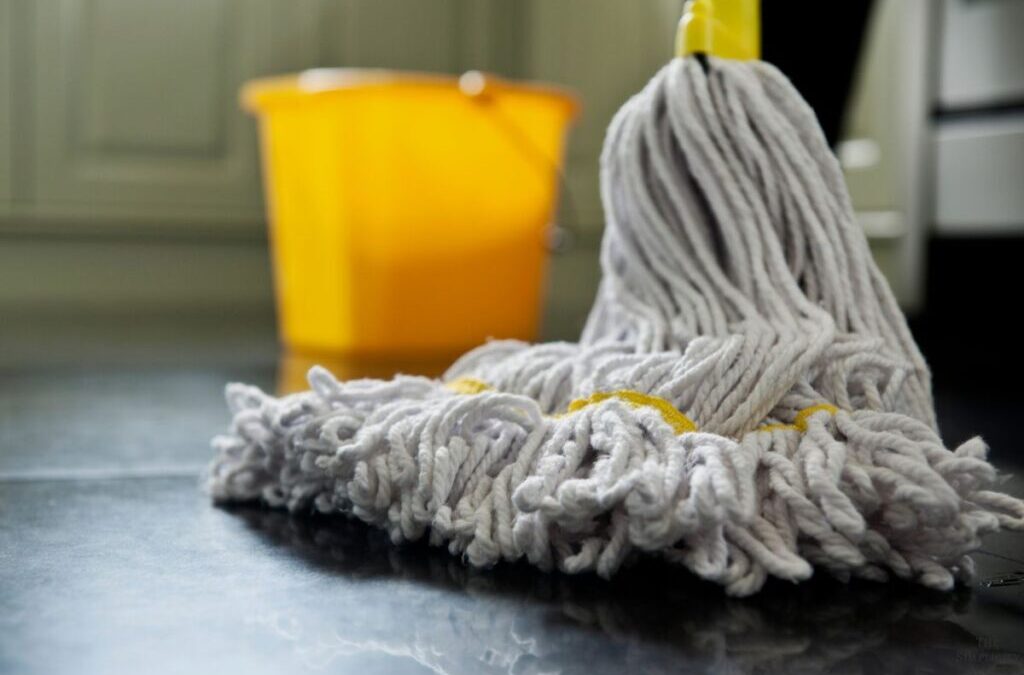Inside: Learn what the wet room cleaning method is and how to use it to deep clean your home.
A guest post by Evelyn Long
TikTok habitually turns everyday chores into internet sensations, and cleaning is no exception.
The latest method making the rounds is the “wet room” technique, which shows clips of people spraying down their bathrooms or kitchens with soap and water like they’re power-washing.
Viewers are skeptical and impressed. Is the method vital for deep cleaning or just another fad?
Here are nine things to know before you drag the garden hose pipe into your bathroom because of a dubious trend.
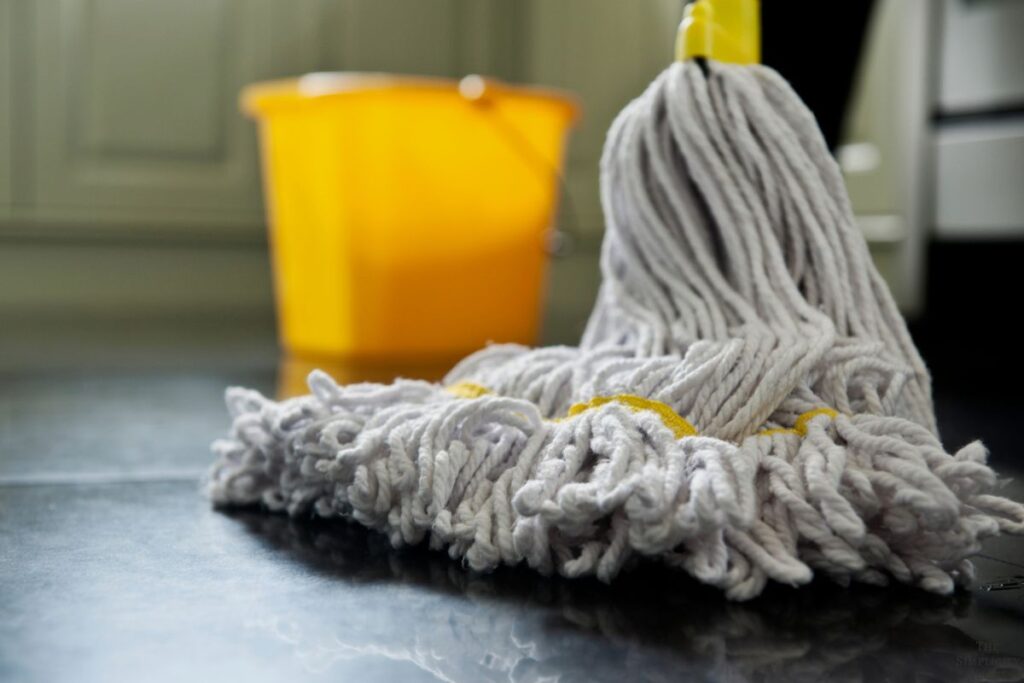
What Is the Wet Room Cleaning Method?
The wet room method is based on European bathroom design, where the entire space is waterproofed and designed to get wet.
It’s a dramatic shift from the usual targeted wipe-downs or focusing on the toilet or sink separately.
With this method, you wash the entire room in one go.
In cleaning terms, it means:
- Spraying or mopping large amounts of water mixed with cleaner across surfaces.
- Scrubbing floors, walls, and fixtures with a large mop or broom.
- Rinsing spaces and letting them air dry.
Why Wet Room Cleaning Went Viral
The method looks deeply satisfying on TikTok and Instagram. Watching soap foam run down tiles and seeing a dingy grout line brighten up is oddly therapeutic.
The idea of this being a no-fuss cleaning method is also very appealing.
The driving force is letting the water do the work, and using a broom instead of a small bathroom sponge is much faster.
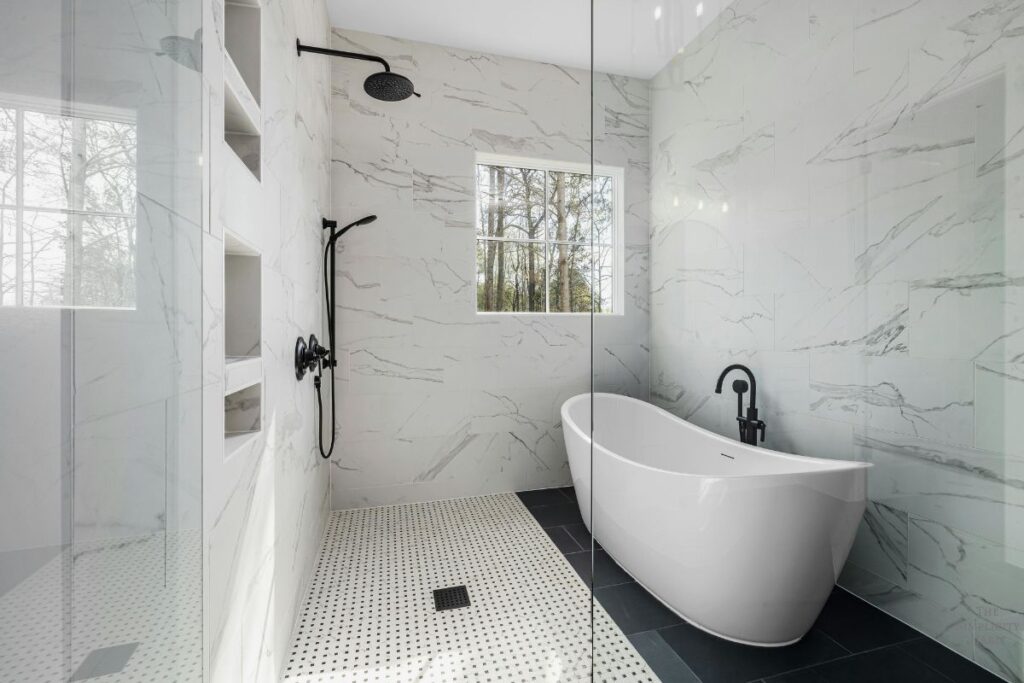
Why It Works for Deep Cleaning
The method is undeniably successful in the correct settings, but it isn’t for every bathroom or person. Bathrooms built as true wet rooms that are fully waterproofed or kitchens with stone and tile surfaces can handle the occasional soaking, but other spaces may not be able to handle it.
This method removes buildup quickly. Large-scale rinsing helps strip away layers of grime and dust that collect in corners.
The peroxide in some cleaning solutions naturally strips away organic particles like mold or gray film from sanitary ware and hardware. Instead of switching tools between surfaces, you use one mop or broom for a one-and-done clean.
What Supplies Do You Need?
If you decide to give this method a test-drive, you’ll need the following:
- Protective gear like eye protection, rubber gloves, and waterproof shoes
- A spray bottle or mop bucket for applying cleaner and water
- Soft-bristle broom and squeezable mop
- Sponges and towels for application in difficult places
- Drain covers to catch debris and prevent clogging
- Fans and dehumidifiers to speed up drying and limit mold
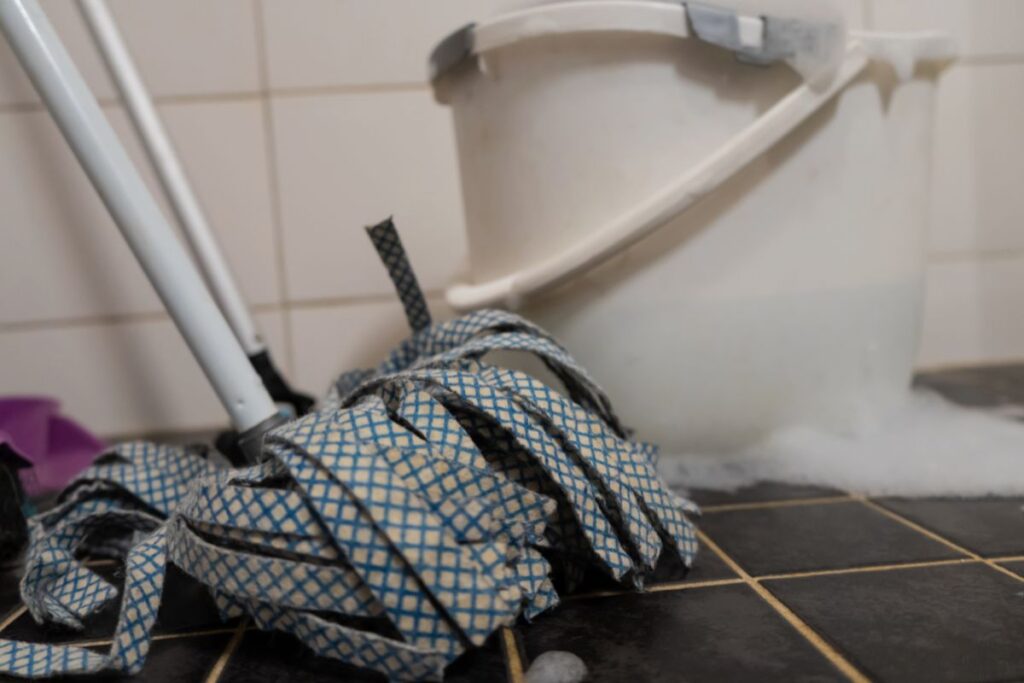
Why Prep Work Matters
Not all kitchens or bathrooms are built for water exposure. A few key checks make or break a bathroom’s success.
To start, check your bathroom’s integrity. If the walls are painted, it’s not going to work. Tiles with gaps in the grouting or walls that haven’t been fully waterproofed before tiling may also be a no-no.
Look for tiles that have buckled or fallen, indicating an existing moisture problem, which means more water is unwise.
Before you start, prepare by removing all freestanding items like hygiene products, plants, ornaments, and towels that can get in the way. Use a large basket to collect all movable pieces and place them outside the room.
If you have wood surfaces like laminate floors or built-in cupboards, you must protect them from extra moisture, which causes planks to swell and can split the wood. Vacuuming the space before you wash can help remove excess dust and biologicals like hair, keeping your wash water cleaner.
You must also secure all outlets and switches with a plastic sheet and painter’s tape to ensure they remain dry. While this method is all about the water, you should use some restraint and avoid turning the room into a swimming pool.
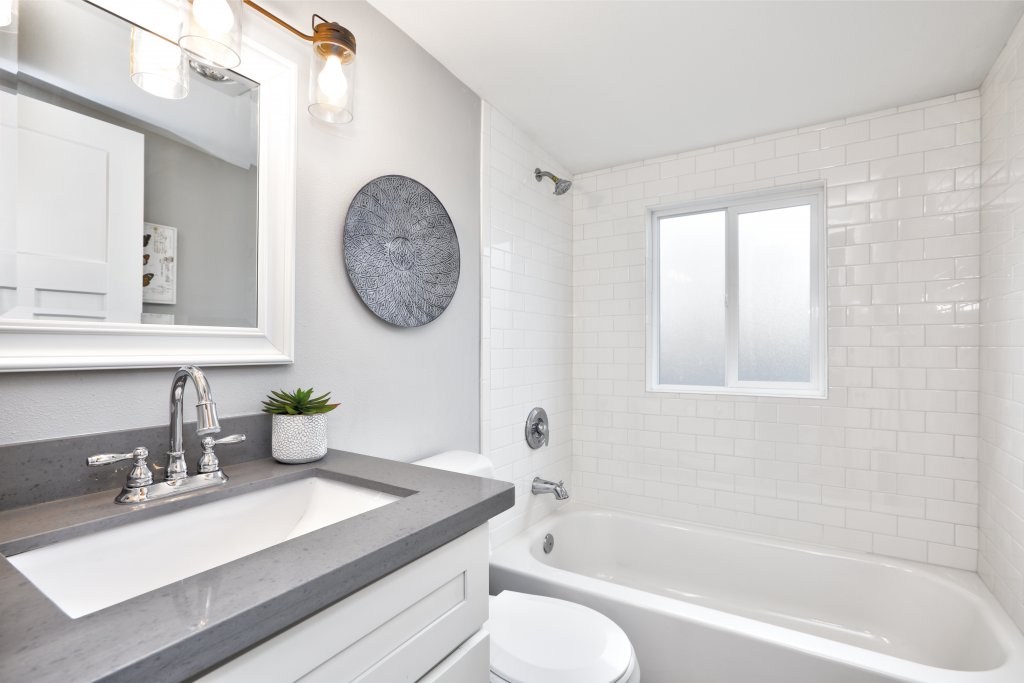
How to Do the Wet Room Cleaning Method
The typical viral video breaks it down into steps like these:
| Steps | Method |
| 1. Clear the space | Remove anything that’s loose or that’s not water-friendly to provide easy access. |
| 2. Spray cleaner | Use a sprayer to mist the walls, floors, sink and tub with a cleaning solution. Spray more on tough-to-clean areas. |
| 3. Scrub lightly | A soft-bristle brush or broom helps loosen grime without scratching. A sponge mop is also useful for working the cleaners into a lather. |
| 4. Rinse | This is the fun part. Use water, usually from the same sprayer or mop bucket, to wash the soap from all surfaces. |
| 5. Dry | Use a sprayer to mist the walls, floors, sink, and tub with a cleaning solution. Spray more on tough-to-clean areas. |
When After Care Matters
Deep cleaning doesn’t end once the water drains. To finish the job, you must wipe down vents for dust and check for mold, which loves collecting in damp places.
Contact a professional cleaning expert if you notice spores, especially black mold.
Not drying the bathroom or kitchen can create a damp problem and cause mold to thrive, so ensure you dry all surfaces thoroughly. Also, use the opportunity to wash all shower and window curtains, which often hide more germs than actual bathroom surfaces.
Wash and disinfect toothbrush holders, soap dishes, and other small items before putting them back to ensure a whole-room clean.
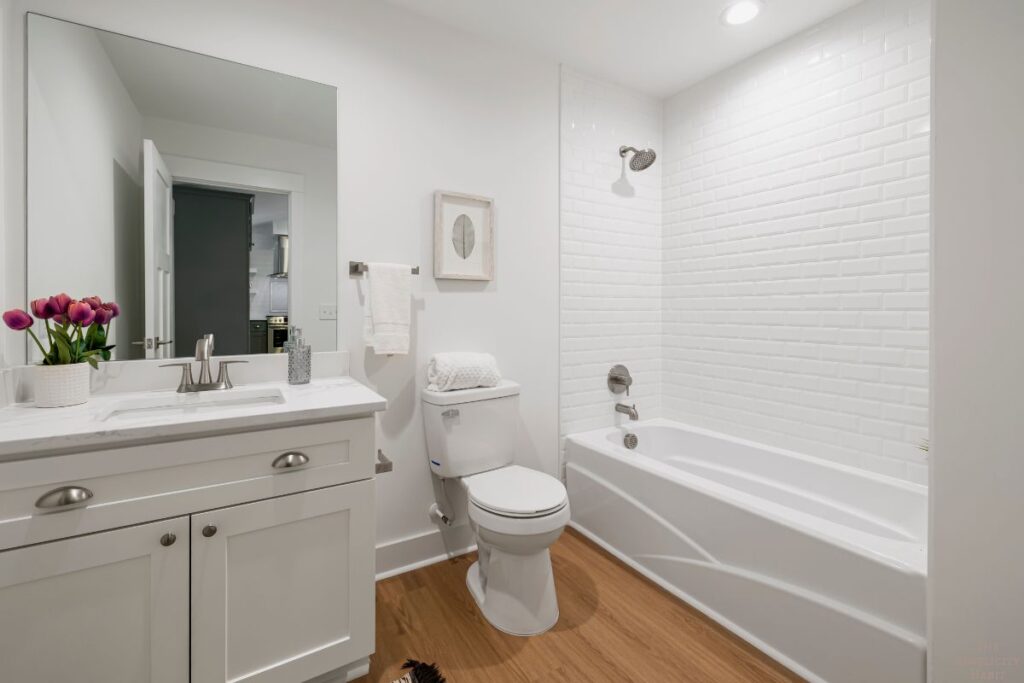
Where the Wet Room Cleaning Method Works & Doesn’t
The pros of this cleaning method include its satisfaction and thoroughness for tiled surfaces. It’s excellent for grouting and glass and is ideal for hard water stain removal.
Since you simplify the process, it’s easy to do and fantastic for those who love multitasking.
However, it can risk wood surfaces, laminates, and drywall, which can cause damp problems, leading to mold and rot. If your bathroom already has a lot of humidity, it isn’t wise to use this method.
You need some time for the bathroom to dry, which can be a challenge if it doesn’t have good airflow.
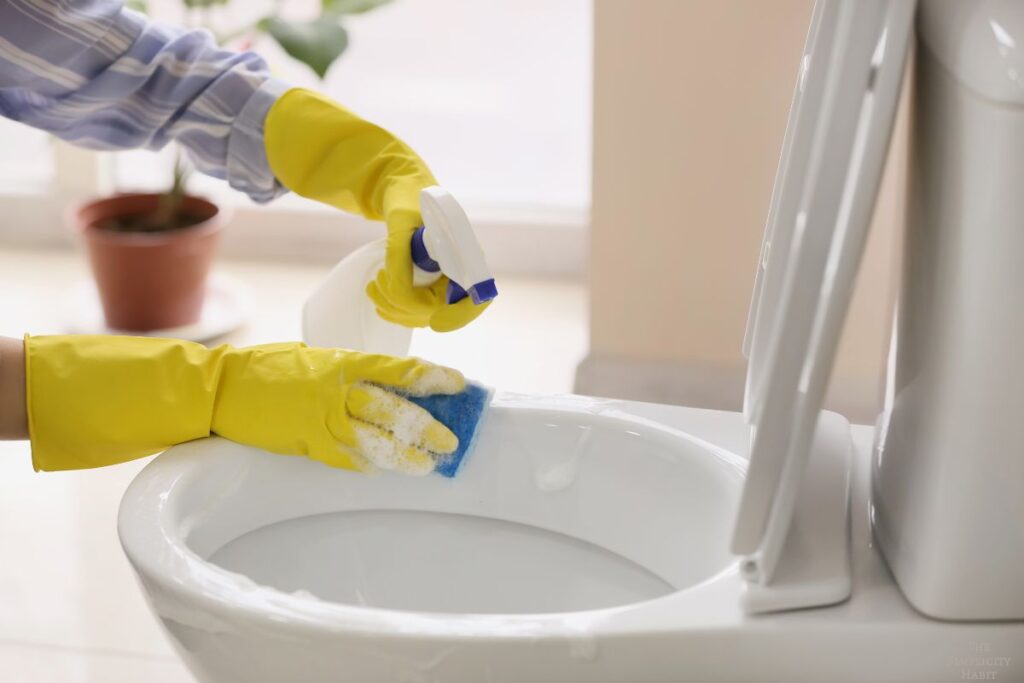
Which Alternative Is Best for Deep Cleaning Success?
While this is an impressive option, it’s not a universal solution.
In most American homes, where bathrooms and kitchens include wood trim, laminate flooring, and unsealed drywall, it’s likely to cause more damage than save time. Plus, with 34% of U.S. states experiencing drought, can you afford to waste water on a wet room cleaning trend?
Since most people don’t clean their bathrooms daily, it’s rather an issue of consistency than technique. Daily wipe-downs and weekly mopping will produce a hygienically clean bathroom.
For family bathrooms or kitchens with heavier loads, a weekly scrub or monthly deep clean that includes treating vents, curtains, and grout is sufficient without “rinsing” the whole space in watery suds.
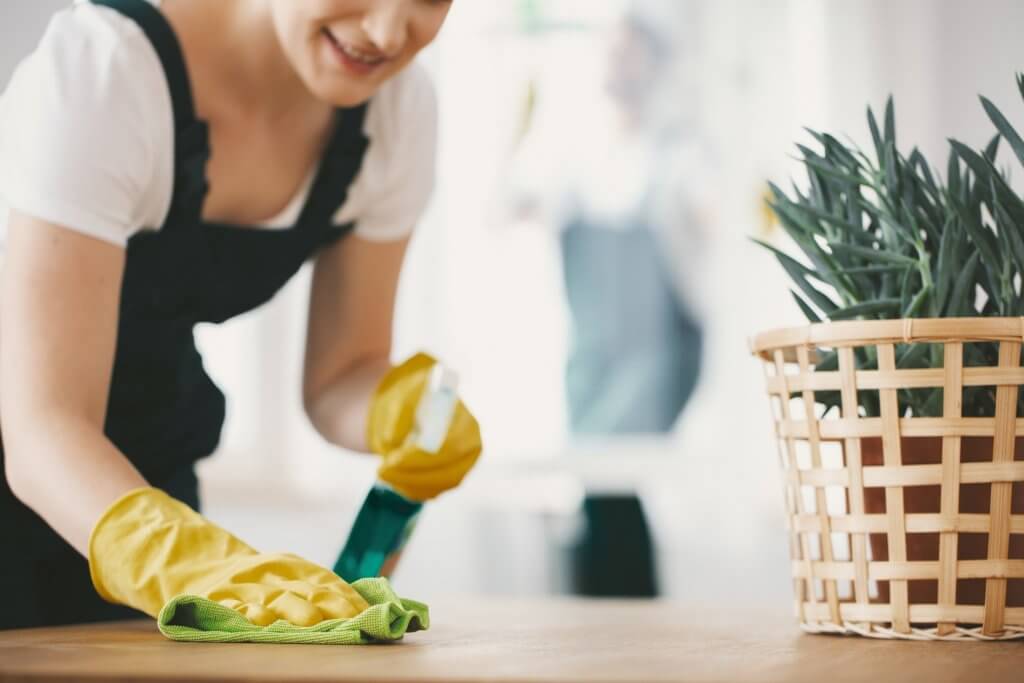
A Quick Scrub
TikTok trends often do more harm than good, and what makes for captivating viewing may not always apply to your home. Just because you saw it on the internet doesn’t mean it suits your property, so consider carefully before spraying down your spaces.
A more realistic and time-effective way to clean is to organize daily wipe-downs and weekly scrubs for bathroom spaces. This way, you can enjoy the same sparkle without worrying about soggy floors, cabinets, or hidden mold.

Evelyn Long is a home organization writer who helps homeowners and renters maintain a neat space through innovative decluttering tips. She has written for several other publications, including the National Association of Realtors and DecorMatters. She is also the editor-in-chief of Renovated Magazine, where she shares additional tips on decluttering and home organization.
Want more helpful cleaning tips?
Check out these posts:
Had you heard of the wet room cleaning method? What do you think of it? Let us know in the comments section below.
Sign up on the form below to get weekly decluttering and simplifying inspiration sent straight to your inbox. You’ll also get the free 8 Quick Wins for Decluttering Worksheet to help you start to simplify your life today.

